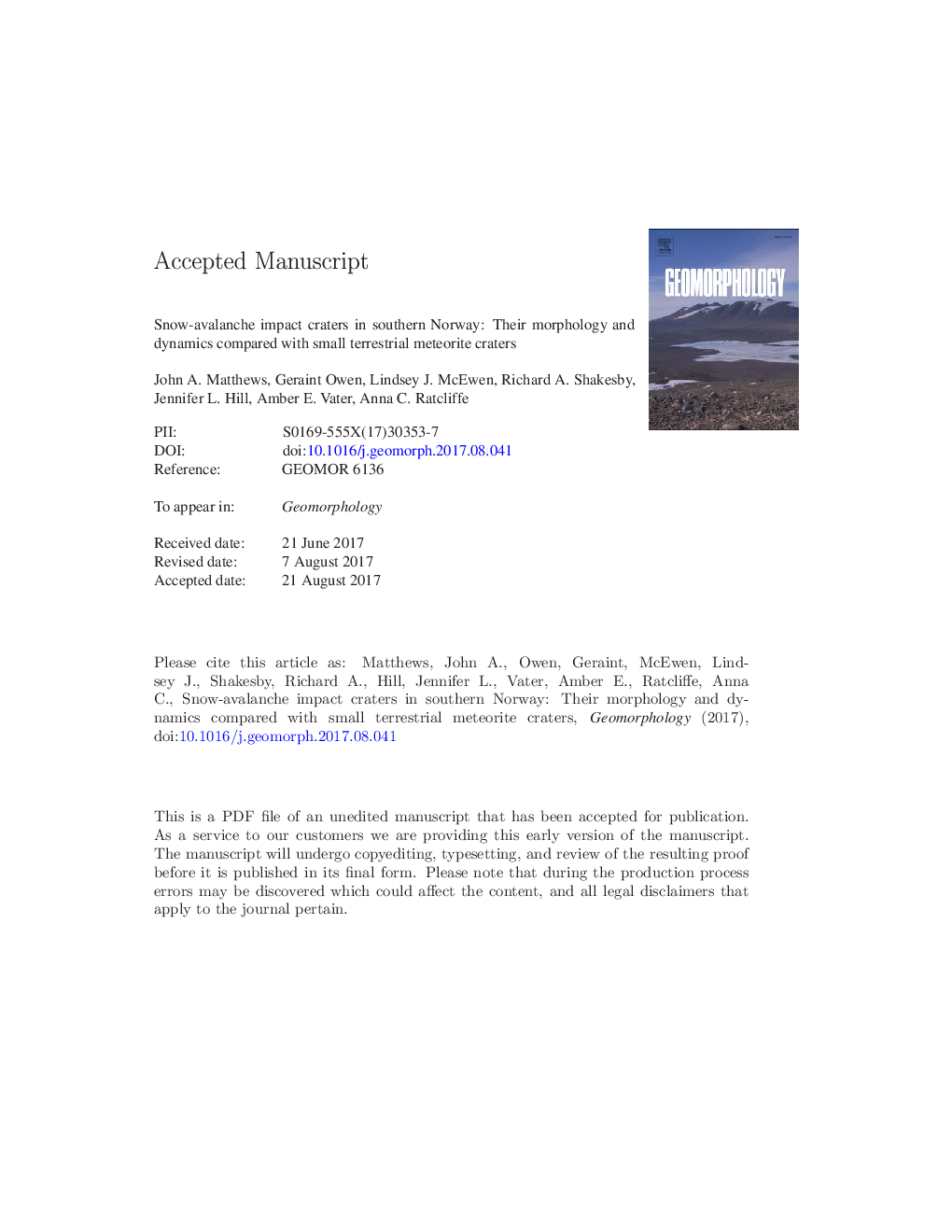| کد مقاله | کد نشریه | سال انتشار | مقاله انگلیسی | نسخه تمام متن |
|---|---|---|---|---|
| 5780805 | 1635354 | 2017 | 65 صفحه PDF | دانلود رایگان |
عنوان انگلیسی مقاله ISI
Snow-avalanche impact craters in southern Norway: Their morphology and dynamics compared with small terrestrial meteorite craters
ترجمه فارسی عنوان
دهانه تاثیر برف برف در جنوب نروژ: مورفولوژی و پویایی آنها در مقایسه با دهانه های شهاب سنگ کوچک زمین
دانلود مقاله + سفارش ترجمه
دانلود مقاله ISI انگلیسی
رایگان برای ایرانیان
کلمات کلیدی
دهانه ضربه برف برف، تشکیل چاله، فرآیندهای تاثیر گذار، دهانه شهاب سنگ، انرژی جنبشی، جنوب نروژ،
موضوعات مرتبط
مهندسی و علوم پایه
علوم زمین و سیارات
فرآیندهای سطح زمین
چکیده انگلیسی
This regional inventory and study of a globally uncommon landform type reveals similarities in form and process between craters produced by snow-avalanche and meteorite impacts. Fifty-two snow-avalanche impact craters (mean diameter 85 m, range 10-185 m) were investigated through field research, aerial photographic interpretation and analysis of topographic maps. The craters are sited on valley bottoms or lake margins at the foot of steep avalanche paths (α = 28-59°), generally with an easterly aspect, where the slope of the final 200 m of the avalanche path (β) typically exceeds ~ 15°. Crater diameter correlates with the area of the avalanche start zone, which points to snow-avalanche volume as the main control on crater size. Proximal erosional scars ('blast zones') up to 40 m high indicate up-range ejection of material from the crater, assisted by air-launch of the avalanches and impulse waves generated by their impact into water-filled craters. Formation of distal mounds up to 12 m high of variable shape is favoured by more dispersed down-range deposition of ejecta. Key to the development of snow-avalanche impact craters is the repeated occurrence of topographically-focused snow avalanches that impact with a steep angle on unconsolidated sediment. Secondary craters or pits, a few metres in diameter, are attributed to the impact of individual boulders or smaller bodies of snow ejected from the main avalanche. The process of crater formation by low-density, low-velocity, large-volume snow flows occurring as multiple events is broadly comparable with cratering by single-event, high-density, high-velocity, small-volume projectiles such as small meteorites. Simple comparative modelling of snow-avalanche events associated with a crater of average size (diameter 85 m) indicates that the kinetic energy of a single snow-avalanche impact event is two orders of magnitude less than that of a single meteorite-impact event capable of producing a crater of similar size, which is consistent with the incremental development of snow-avalanche impact craters through the Holocene.
ناشر
Database: Elsevier - ScienceDirect (ساینس دایرکت)
Journal: Geomorphology - Volume 296, 1 November 2017, Pages 11-30
Journal: Geomorphology - Volume 296, 1 November 2017, Pages 11-30
نویسندگان
John A. Matthews, Geraint Owen, Lindsey J. McEwen, Richard A. Shakesby, Jennifer L. Hill, Amber E. Vater, Anna C. Ratcliffe,
